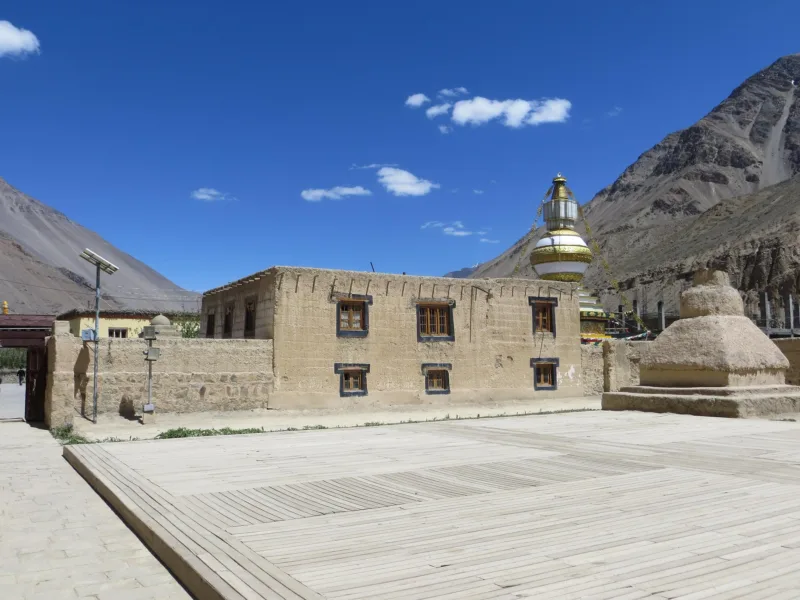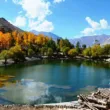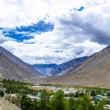Tabo, a small village in the Spiti Valley of Himachal Pradesh, India, is a hidden gem that offers a serene and peaceful escape from the hustle and bustle of city life. Nestled in the heart of the Himalayas, Tabo is renowned for its ancient monasteries, stunning landscapes, and rich cultural heritage.
Significance of the Destination
Tabo holds great religious and cultural significance, particularly for followers of Buddhism. The Tabo Monastery, also known as the “Ajanta of the Himalayas,” is a UNESCO World Heritage Site and one of the oldest monasteries in India, dating back over a millennium. The village and its surroundings provide a unique opportunity for travelers to immerse themselves in the local culture and spirituality.
How to Get There
2.1. Air Travel Options
The nearest airport to Tabo is the Bhuntar Airport in Kullu, approximately 250 kilometers away. From the airport, travelers can hire a taxi or take a bus to reach Tabo. Alternatively, flights to the Shimla Airport, which is around 365 kilometers away, can also be considered.
2.2. Road Travel Options
Tabo is well-connected by road, and buses and taxis are readily available from major towns like Shimla, Manali, and Dharamshala. The journey by road offers breathtaking views of the Himalayas and the opportunity to experience the local culture and hospitality.
2.3. Train Travel Options
The nearest railway station to Tabo is the Joginder Nagar Railway Station, about 360 kilometers away. From the station, travelers can take a bus or hire a taxi to reach Tabo. Alternatively, the Kalka-Shimla Railway, a UNESCO World Heritage Site, provides a scenic train journey to Shimla, from where road transport can be arranged.

Best Time to Visit
3.1. Weather Conditions
The best time to visit Tabo is during the summer months of May to October when the weather is pleasant, and the temperatures range between 15°C to 25°C. During this period, the roads are clear, and the landscapes are at their most beautiful, with lush greenery and blooming flowers.
3.2. Festivals and Events
Travelers should also consider planning their trip around local festivals and events, such as the Tabo Monastery Festival, which takes place in July and is celebrated with much fervor and enthusiasm. It provides a unique opportunity to witness traditional dance performances, rituals, and cultural activities.
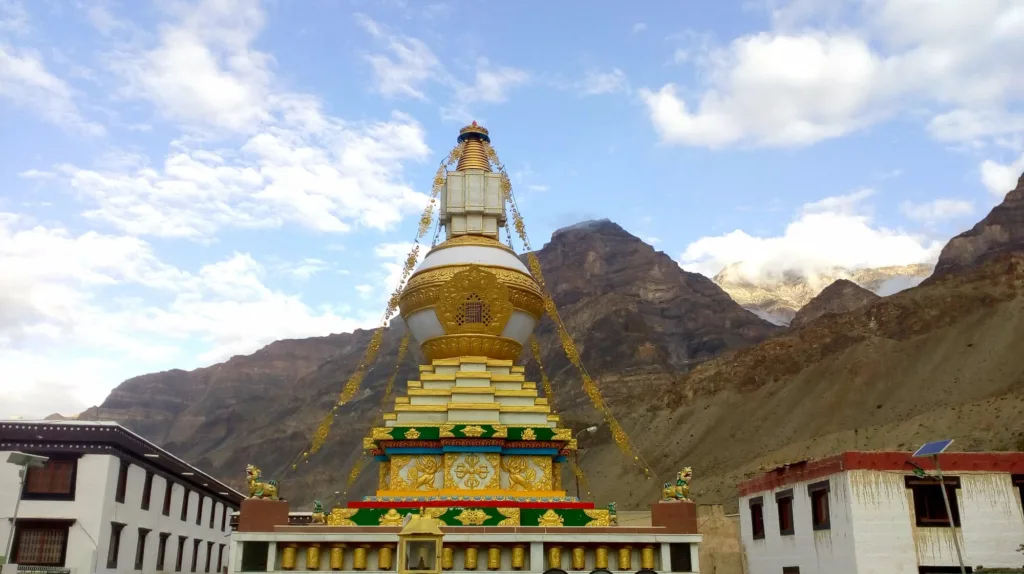
Top Attractions
4.1. Tabo Monastery
The Tabo Monastery, also known as the “Ajanta of the Himalayas,” is the main attraction of the village. It houses ancient Buddhist scriptures, murals, and statues, and is a must-visit for anyone interested in history, art, and spirituality.
4.2. Tabo Caves
The Tabo Caves, located above the monastery, served as meditation chambers for monks in ancient times. Today, they offer stunning views of the surrounding valleys and mountains and provide a glimpse into the ascetic lifestyle of the monks.
4.3. Nako Village
Located about 60 kilometers from Tabo, Nako Village is another must-visit destination. It is known for its serene Nako Lake, ancient monasteries, and traditional mud houses. The village provides a unique opportunity to experience the traditional lifestyle of the Spiti Valley.

Cultural Insights
5.1. Local Traditions and Customs
Tabo is home to a warm and welcoming community that still follows traditional customs and practices. Visitors can experience local rituals, participate in community gatherings, and gain insights into the rich cultural heritage of the region.
5.2. Cuisine
The local cuisine of Tabo is influenced by Tibetan and Indian flavors. Some of the must-try dishes include Thukpa (noodle soup), Momos (dumplings), and Tsampa (barley flour porridge). The food is simple, hearty, and delicious, providing a true taste of the Himalayas.

Adventure Activities
6.1. Trekking Options
Tabo is a trekker’s paradise, with numerous trekking routes that offer breathtaking views of the Himalayas. Popular trekking options include the Tabo to Dhankar trek, the Tabo to Kaza trek, and the Tabo to Nako trek. These treks provide an opportunity to explore the natural beauty and cultural richness of the region.
6.2. River Rafting
For those seeking an adrenaline-pumping adventure, river rafting in the Spiti River is a must-try. The river offers challenging rapids and stunning landscapes, providing a thrilling experience for both novice and experienced rafters.
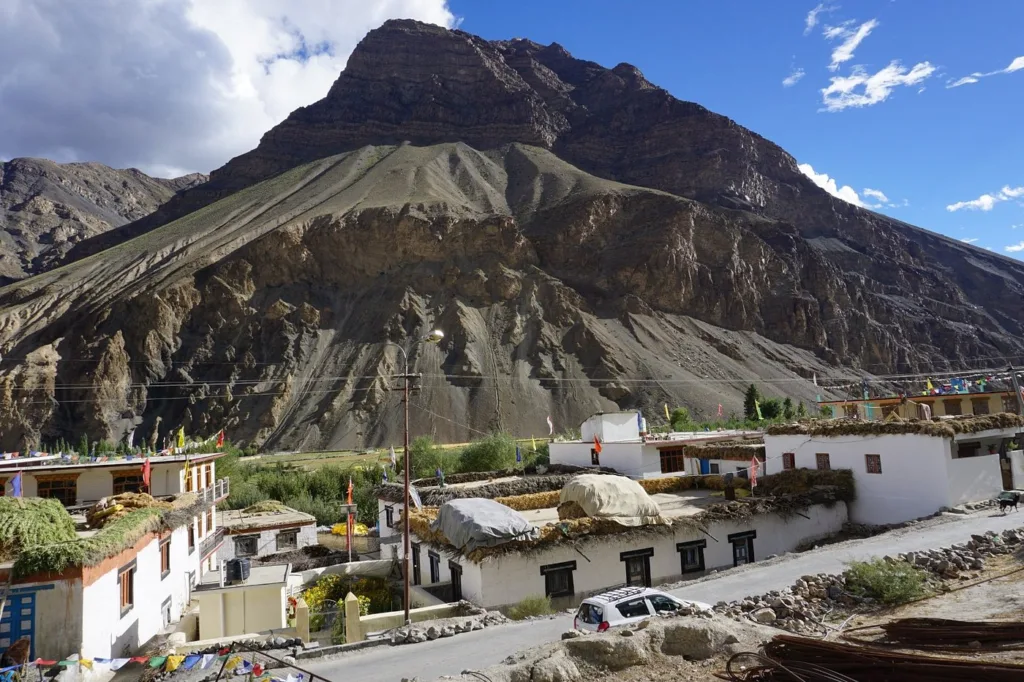
Shopping and Souvenirs
7.1. Local Markets
The local markets in Tabo offer a variety of handicrafts, jewelry, and traditional clothing. Travelers can shop for unique souvenirs such as prayer flags, Buddhist thangkas, and hand-woven shawls, all made by local artisans.
7.2. Handicrafts
Handicrafts play a significant role in the local economy of Tabo. Visitors can witness traditional craft-making techniques, such as weaving, pottery, and wood carving, and purchase handmade products that reflect the cultural heritage of the region.
Accommodation Options
8.1. Hotels and Guesthouses
Tabo offers a range of accommodation options, from budget guesthouses to mid-range hotels. Most accommodations provide comfortable rooms with basic amenities and warm hospitality, ensuring a pleasant stay for travelers.
8.2. Homestays
For a more authentic and immersive experience, travelers can opt for homestays with local families. Homestays provide an opportunity to live like a local, learn about their customs and traditions, and enjoy home-cooked meals prepared with locally sourced ingredients.
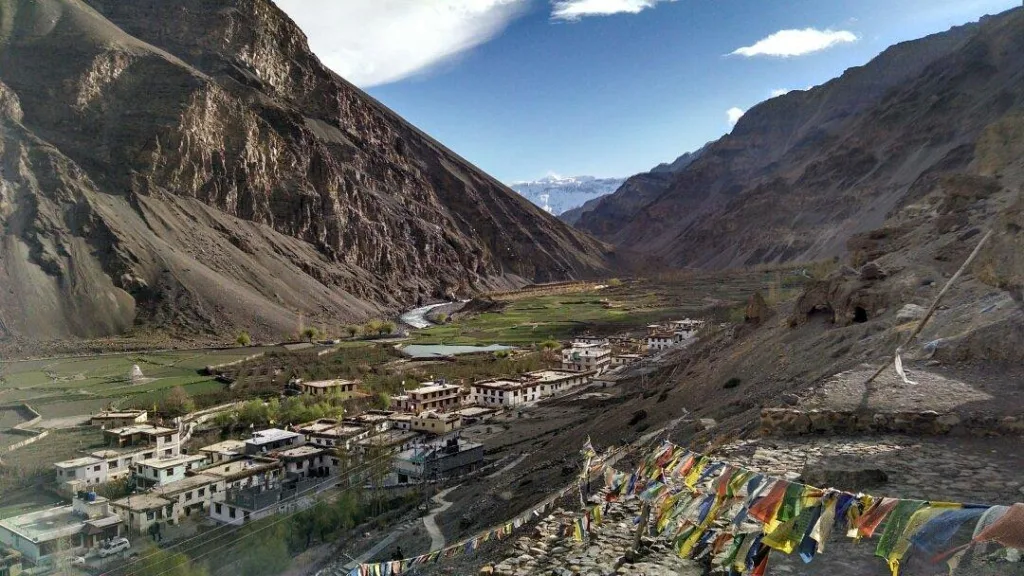
Travel Tips
9.1. Language and Communication
The primary language spoken in Tabo is Bhoti, a Tibetan language. However, Hindi and English are also commonly understood. Travelers should make an effort to learn a few basic phrases in Bhoti to enhance their travel experience and connect with the local community.
9.2. Health and Safety
Travelers should take necessary precautions to stay healthy and safe during their trip to Tabo. This includes carrying a first aid kit, staying hydrated, and acclimatizing to the high altitude. It’s also advisable to have travel insurance that covers medical expenses and emergencies.
9.3. Budget and Expenses
Tabo is an affordable travel destination, and travelers can enjoy a memorable trip without breaking the bank. Accommodation, food, and transportation are reasonably priced, making it an ideal destination for budget travelers.
Similar Articles
Conclusion
In conclusion, Tabo is a hidden gem in the Himalayas that offers a unique blend of natural beauty, cultural richness, and spiritual significance. Whether you’re a history enthusiast, an adventure seeker, or a cultural explorer, Tabo has something to offer for every traveler. With its ancient monasteries, stunning landscapes, and warm hospitality, a trip to Tabo is sure to be an unforgettable experience. So pack your bags, embark on a journey to this mystical village, and create memories that will last a lifetime.
FAQs
1. What is the best way to reach Tabo?
The best way to reach Tabo is by road, as it is well-connected by buses and taxis from major towns like Shimla, Manali, and Dharamshala. Alternatively, travelers can also take a flight to the Bhuntar Airport or Shimla Airport and hire a taxi or take a bus to reach Tabo.
2. What are the must-visit attractions in Tabo?
The must-visit attractions in Tabo include the Tabo Monastery, Tabo Caves, and Nako Village. Each of these attractions offers a unique experience and provides a glimpse into the cultural and natural beauty of the region.
3. What are the best trekking options in Tabo?
Tabo offers several trekking options, including the Tabo to Dhankar trek, the Tabo to Kaza trek, and the Tabo to Nako trek. These treks provide an opportunity to explore the stunning landscapes and rich cultural heritage of the Spiti Valley.
4. What is the best time to visit Tabo?
The best time to visit Tabo is during the summer months of May to October, when the weather is pleasant, and the temperatures range between 15°C to 25°C. During this period, the roads are clear, and the landscapes are at their most beautiful.
5. What should I pack for my trip to Tabo?
Travelers should pack warm clothing, comfortable footwear, a first aid kit, and necessary medications. It’s also advisable to carry a camera, sunscreen, sunglasses, and a hat to protect against the sun. Additionally, travelers should carry cash, as ATM facilities are limited in the region.




